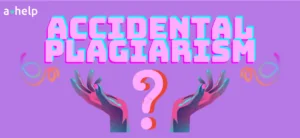We are constantly getting bombarded with loads and loads of information. Some of it is useful, other stuff is just fun. And as you seamlessly memorize all the new details, you may find yourself wondering: are your latest projects genuinely inspired or maybe you just copied those ideas from somewhere else? If this kind of question has ever crossed your mind, then this guide is for you. The main thing we will establish is the line between inspiration vs plagiarism. Now, if you don’t have time to get into details, just know that the key difference is originality. If you hear or see something and you start doing your own research to produce new information – that’s an inspiration. On the other hand, if you simply use the information you learned from somebody without attribution – that’s plagiarism.

✅ AI Essay Writer ✅ AI Detector ✅ Plagchecker ✅ Paraphraser
✅ Summarizer ✅ Citation Generator
Defining Terms and Seeing The Difference: Inspiration vs Plagiarism
Inspiration is the process of being mentally stimulated to create something new. It’s when you encounter an idea, a piece of art, or a conversation that sparks your own creativity, leading you to develop something original. For instance, seeing a beautiful painting might inspire you to create a unique piece of artwork, using the same color palette but expressing your own vision. Inspirationis basically a jumping-off point for your creativity. If you are inspired by something, you don’t use that somethis “as is” and the final creation is distinctly your own.
Example: Imagine reading a groundbreaking novel that explores a dystopian future. Inspired by this, you write your own story set in a futuristic world, but with different characters, plot twists, and themes. Your story is unique, even though the initial idea was raised through someone else’s work.
Plagiarism, on the other hand, is the practice of taking someone else’s work or ideas and presenting them as your own. This can involve copying text, images, music, or any other type of content without proper attribution. Plagiarism is essentially a form of intellectual theft. For example, if you take a passage from an article and include it in your work without crediting the original author, you are committing plagiarism. This act disrespects the original creator and violates ethical and often legal standards.
Example: Suppose you come across a well-written blog post about the impact of social media on teenagers. Instead of using it as a reference and creating your own analysis, you copy large sections of the text verbatim into your own article, presenting it as your original work. This act of copying without credit is a clear case of plagiarism.
Let’s break down the prominent characteristics of each:
| Inspiration | Characteristics | Plagiarism |
|---|---|---|
| Inspiration involves taking a basic idea and transforming it into something new and unique. | Originality vs. Copying | Plagiarism is copying existing work without making significant changes or giving credit. |
| With inspiration, the intent is to build upon an idea and contribute your own thoughts, while properly referencing any influences. | Intent and Attribution | Plagiarism, on the contrary, aims to pass off someone else’s work as your own, often without any acknowledgment of the original source. |
How to Get Inspired and Use Inspiration Wirhout Copying
Inspiration can lead to great creativity, but it’s important to use it without falling into plagiarism. So, how do you get inspired and still create something original?

First, identify what you admire about a particular work. Is it the theme, the technique, or the emotional impact? Focus on these core elements rather than the exact words or specific details. For instance, if you appreciate the vivid imagery in a novel, think about how you can create strong visuals in your own writing, but with a different setting, storyline, and chracters.
Next, blend the old with the new. Use the techniques that inspire you as a foundation, then build upon them with your unique ideas. Imagine you’re a painter inspired by Van Gogh’s color palette. Instead of fully replicating his paintings, you can create your own artwork using similar colors to express a completely different subject.
Remember to always give credit where it’s due. If you’re influenced by someone’s work, acknowledge it through proper citation. This shows respect to the original creator and guards your integrity. When you’re writing an essay inspired by a particular study, for example, reference the study in your bibliography and discuss how it influenced your thinking. This way, you’re using inspiration ethically, contributing your perspective while respecting the original source.
After all, inspiration is about transforming what you admire into something new and personal. By understanding and using the strengths of the works you respect, you can create original content that stands out and respects intellectual property of others.
Plagiarism Checks – Your Key To Originality
In case you are still scared of unintentionally copying somebody’s work, there are ways of making sure you are not doing that. With written work, everything is easy. All you need is just look for a quality plagiarism checker which can easily be found online.
If you don’t want to go too far, you can simply use our tool!
Of course, you can also do manual checking as well (this is in case you have a lot of free time). Just take the work that inspired you and read it against your own piece. Noticing a lot of similarities? Then you need to add relevant citations and rephrase your text. Also, try to add a bit of your own reflections or conclusions on the matter (if it is a scientific paper, for example).
In case we are talking about an artwork, you can simply take a look at what you have created and the original piece you found inspiring. This will give you all the information to decide whether you opted for inspiration or plagiarism during you creativity session.
Conclusion
What we have learned? To sum up, inspiration is when something fuels your own creativity and gives you the power necessary to build on, transform, and contribute to existing ideas. Plagiarism, however, undermines originality by copying others’ work without giving proper credit. The trick to using inspiration without crossing into plagiarism is to transform what you admire into something new and uniquely yours. Use plagiarism checkers and do a quick manual review to make sure you’re not accidentally copying. Whether you’re writing, painting, or creating anything else, remember that originality, proper credit, and understanding your influences will help you come up with awesome fresh ideas.
FAQ
Follow us on Reddit for more insights and updates.





Comments (0)
Welcome to A*Help comments!
We’re all about debate and discussion at A*Help.
We value the diverse opinions of users, so you may find points of view that you don’t agree with. And that’s cool. However, there are certain things we’re not OK with: attempts to manipulate our data in any way, for example, or the posting of discriminative, offensive, hateful, or disparaging material.